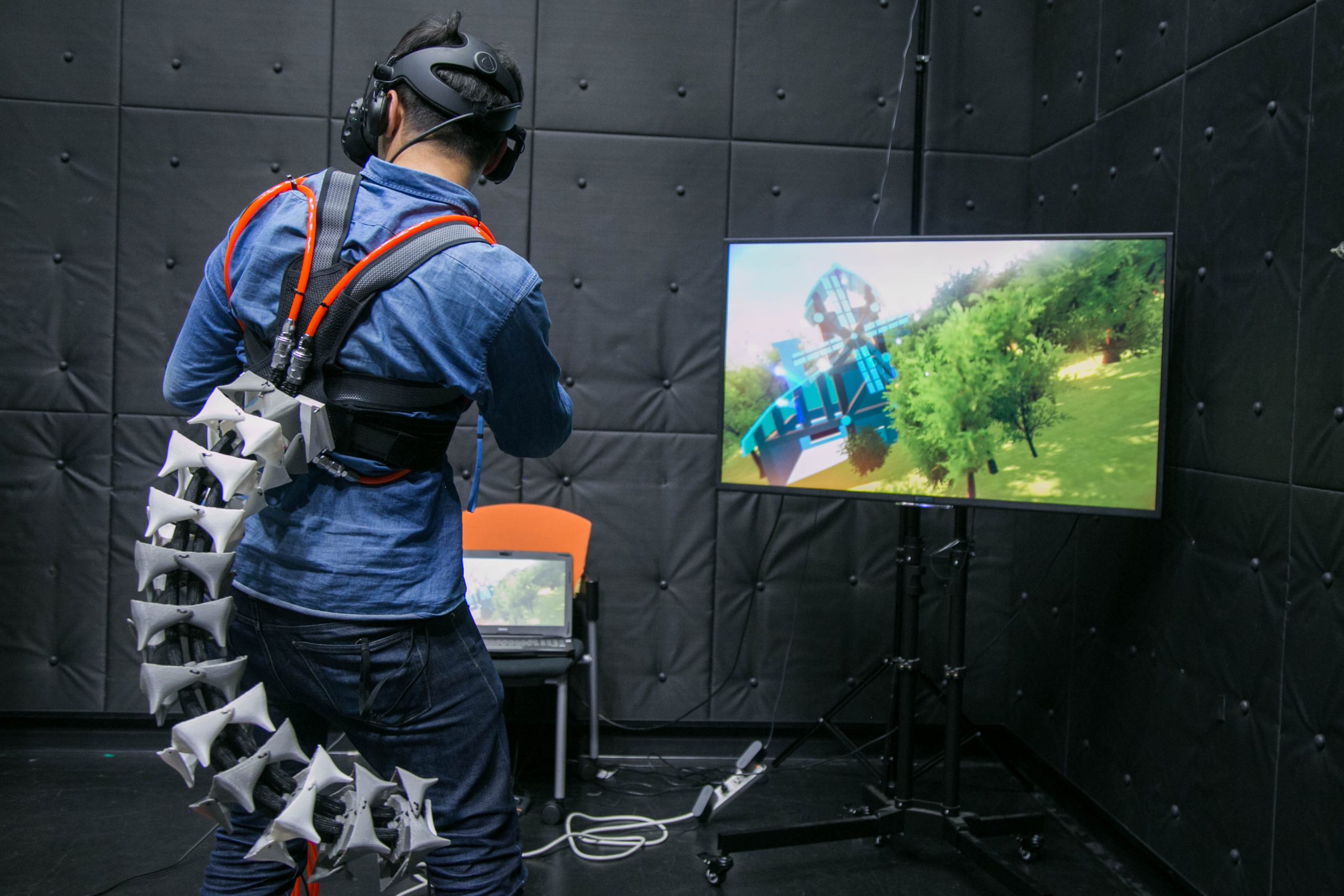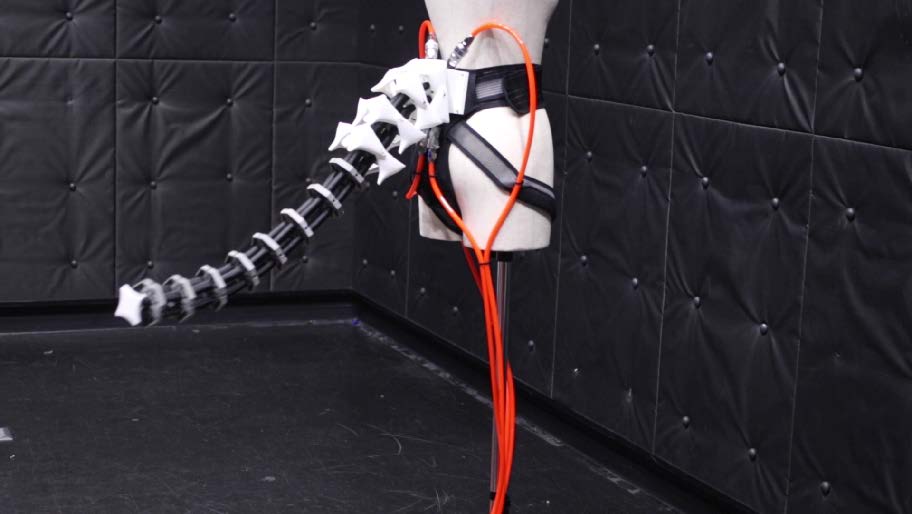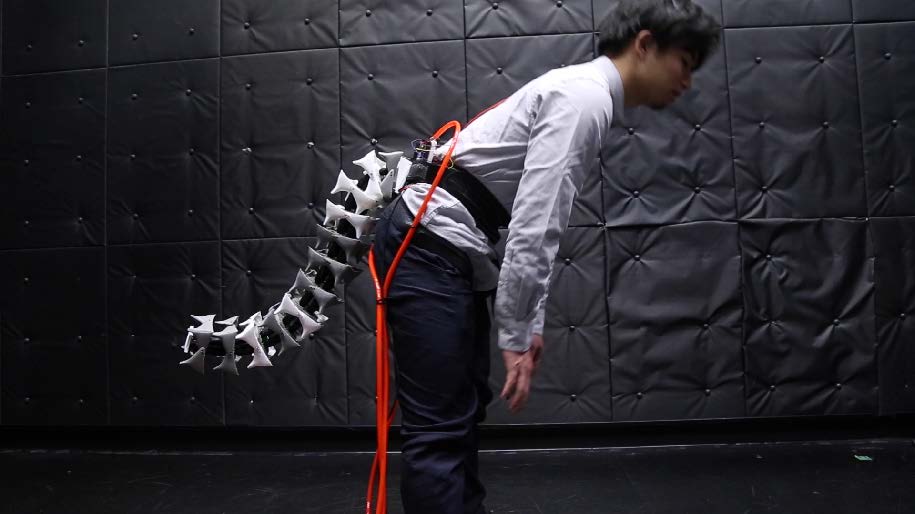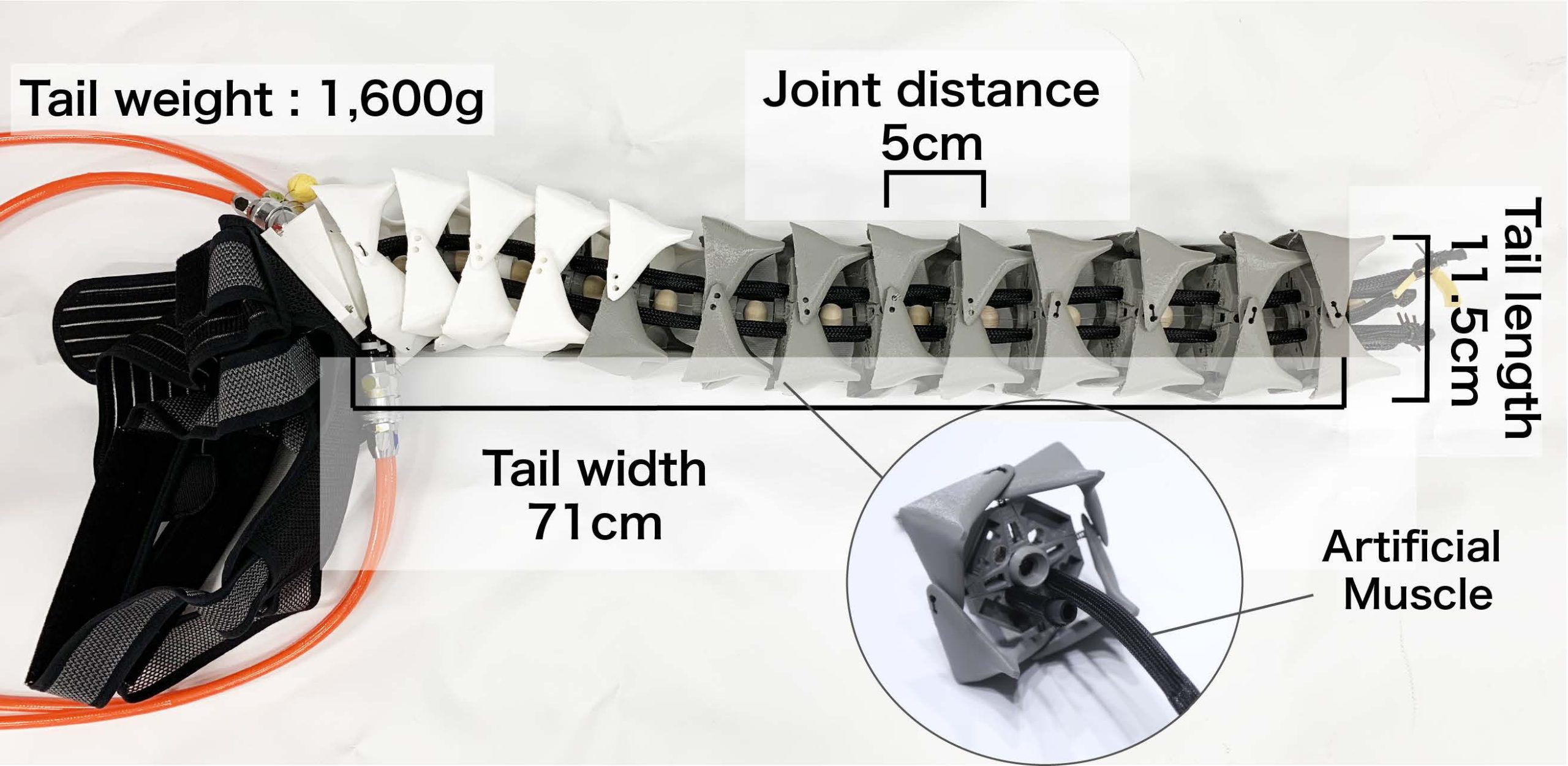“Arque: Artificial Biomimicry-Inspired Tail for Extending Innate Body Functions” by Nabeshima, Saraiji and Minamizawa
Conference:
Type(s):
Entry Number: 52
Title:
- Arque: Artificial Biomimicry-Inspired Tail for Extending Innate Body Functions
Presenter(s)/Author(s):
Abstract:
For most mammals and vertebrate animals, the tail plays an important role for their body providing variant functions to expand their mobility, or as a limb that allows manipulation and gripping. In this work, Arque, we propose an artificial biomimicry-inspired anthropomorphic tail to allow us to alter our body momentum for assistive, and haptic feedback applications. The proposed tail consists of adjacent joints with a spring-based structure to handle shearing and tangential forces, and allow managing the length and weight of the target tail. The internal structure of the tail is driven by four pneumatic artificial muscles providing the actuation mechanism for the tail tip. Here we highlight potential applications for using such a prosthetic tail as an extension of the human body to provide active momentum alteration in balancing situations, or as a device to alter body momentum for full-body haptic feedback scenarios.
References:
- Laura Gruss and Daniel Schmitt. 2015. The evolution of the human pelvis: Changing adaptations to bipedalism, obstetrics and thermoregulation. Philosophical transactions of the Royal Society of London. Series B, Biological sciences 370 (03 2015). https://doi.org/10.1098/rstb.2014.0063
- Luciana Massaro, Fabrizio Massa, Kathy Simpson, Dorothy Fragaszy, and Elisabetta Visalberghi. 2016. The strategic role of the tail in maintaining balance while carrying a load bipedally in wild capuchins (Sapajus libidinosus): a pilot study. Primates 57 (01 2016). https://doi.org/10.1007/s10329-015-0507-x
- Michael Porter, Dominique Adriaens, Ross L Hatton, Marc Meyers, and Joanna Mckittrick. 2015. Why the seahorse tail is square. Science (New York, N.Y.) 349 (07 2015). https://doi.org/10.1126/science.aaa6683
- Domenico Prattichizzo, Monica Malvezzi, Irfan Hussain, and Gionata Salvietti. 2014. The Sixth-Finger: a Modular Extra-Finger to Enhance Human Hand Capabilities. Proceedings – IEEE International Workshop on Robot and Human Interactive Communication 2014. https://doi.org/10.1109/ROMAN.2014.6926382
- MHD Yamen Saraiji, Tomoya Sasaki, Kai Kunze, Kouta Minamizawa, and Masahiko Inami. 2018. MetaArms: Body Remapping Using Feet-Controlled Artificial Arms. In The 31st Annual ACM Symposium on User Interface Software and Technology. ACM, 65–74.
- Kaori Ujima, Azusa Kadomura, and Ichiro Sio. 2015. GIO: Artificial Tail To Redevelop Vestigial Functions. IPSJ Interaction 2015, 349–354.
- Curt Walker, Charles J. Vierck Jr., and Louis A. Ritz. 1998. Balance in the cat: role of the tail and effects of sacrocaudal transection. Behavioural Brain Research 91, 1-2 (March 1998), 41–47. https://doi.org/10.1016/S0166-4328(97)00101-0
- Christopher K. Zalewski. 2015. Aging of the Human Vestibular System. Seminars in hearing 36 3 (2015), 175–96.
Keyword(s):
Acknowledgements:
This project is supported by JST Kakenhi (HH19177), and JST ACCEL Embodied Media Project (JPMJAC1404), Japan.







